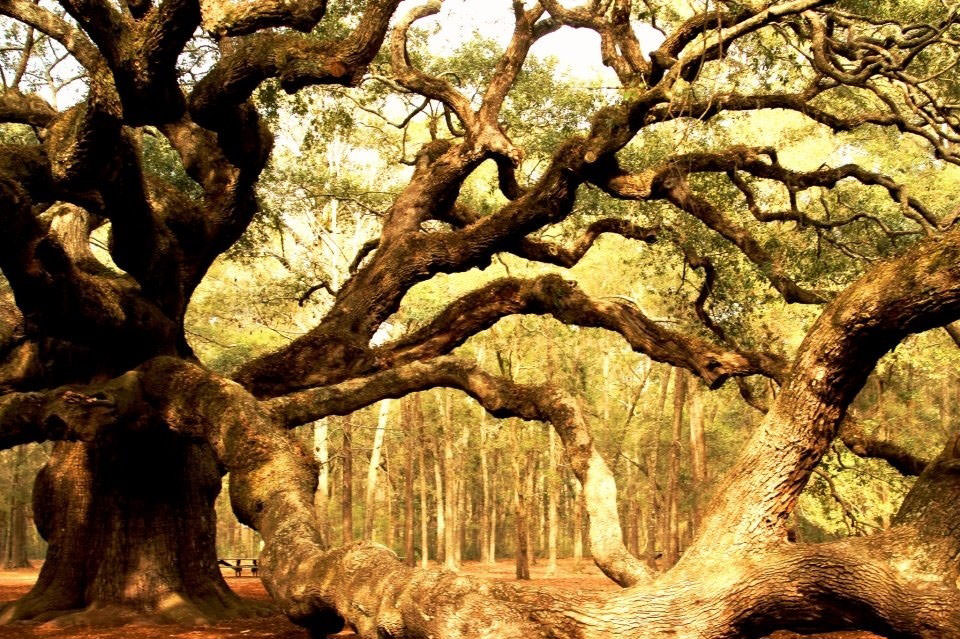This plant may be available to buy
Click the banana to see

|
Florida Live Oak click pic to enlarge |
|
Zone 9-10 The Florida Live Oak is a native and among the very best trees you could ever have in your landscape The live oak above we started from seed in 1978 so this is a mere baby tree. Live oaks can live 350-400 years, so it will be a while before we stop calling him "baby." Here is a pic of his more mature cousin This pic is of a live oak said to be at least 500 years old growing on St. John's Island, about 12 miles from Charleston, SC click pic to enlarge You will see live oaks all over the state. They can reach 60 feet in height and just as wide or even wider. The wood is so strong some say the live oak is "showing off" as it holds its tremendous limbs held wide. It is very strong against the wind as well
Locally a live oak was moved because of road construction and that 130-year-old fellow weighed in at 73 tons. Wait til he gets big !!! The bark is interestingly corrugated and every tree seems to have a unique bark pattern over time The leaves are evergreen but more are held in warm months and fewer are held during winter. This is likely the best shade tree for the South. One major feature of the live oak is the open habit which allows shifting broken light through its leaves to the ground. For this reason you can grow flowers or shrubs or grass near the base. Also, this hardwood is ideal for attaching orchids, staghorn ferns, bromeliads, swings for kids, hammocks for adults No other tree can do so much Sadly, to have a natural tree like the one in the top photo is becoming difficult. The reason is more and more cities are actually legislating the form of trees nurseries may sell. If you look at newly planted live oaks added for city projects or commercial sites, you will see they are all alike in habit. In the picture, you see major branches starting very low to the ground, naturally. Cities and counties in South Florida think they have better ideas than nature as to how tree should grow To get a 'real' live oak, your best bet is to go to the country, inland, and dig up a natural tree, or gather acorns and start your own. You may also see small pots of 3-gal or 7-gal natural trees in small inland nurseries If you want a live oak, prepare a nice site with plenty of room in plain sandy soil or with added organic matter. Water carefully and regularly for the first year or so. Thereafter, you may fertilize to help growth, but as the tree matures, none is really necessary Start attaching your orchids and ferns and bromeliads when the tree is young. These air plants will grow with your tree and develop more character every year
|

